Hockey Equipment List for Players of All Levels
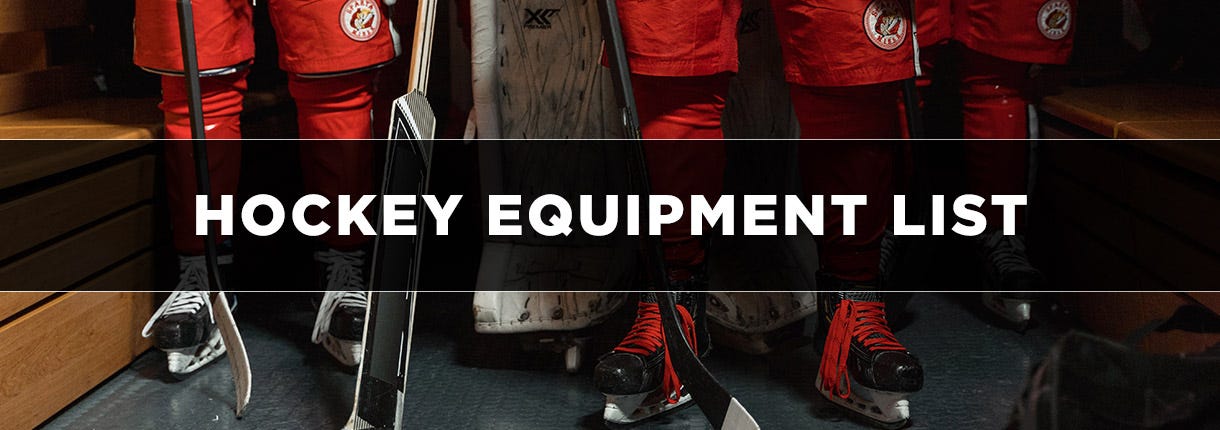
Proper hockey equipment is essential to maximize your safety and performance on the ice. Want to make sure you have everything you need? We’ve compiled an extensive ice hockey equipment list that covers all the must-haves, plus some of those favorite optional items, so you can stay safe – and comfortable – while playing.
From sticks to skates to helmets, and everything in between, our comprehensive full hockey equipment list guide ensures that every hockey player is appropriately outfitted with everything they need, no matter what their level of play or position is.
Wondering where, what, and how to buy hockey equipment? Read on to learn all you need to know with our hockey equipment list guide.
Shop our full selection of hockey equipment at HockeyMonkey today.
Click here to download our printable hockey equipment checklist.
Essential Hockey Equipment List
- Stick – The type of stick you use depends on whether you’re playing defense or offense, but most players want at least one stick made from durable material like carbon fiber composite or wood laminate. You may also want different lengths depending on your height.
- Skates – Quality skates are critical to staying agile on the ice. Look for skates that fit comfortably without being too tight or loose – you should be able to wiggle your toes inside them while standing up straight. Skate laces should be tied tightly enough so they don’t come undone during play but not so tight as to cut off circulation in your feet.
- Helmet – A helmet with a faceguard is one of the most important pieces of hockey equipment for protecting yourself from serious injury. Helmets should be securely fitted to your head so they don’t shift when you make abrupt movements. Make sure your helmet is approved by the Hockey Equipment Certification Council (HECC) for optimal safety.
- Gloves – Gloves must fit snugly to protect your hands from falls and pucks flying at high speeds without restricting movement. Look for reinforced palms, as these areas bear the brunt of contact with surfaces like boards and rink walls during games. You want the padding to be ample along knuckles and fingers, where the impact could occur in gameplay. Investing in quality gloves that can withstand wear and tear is well worth the money you spend on them.
- Shoulder pads – Shoulder pads help protect the upper body. Pads should fit comfortably without slipping or moving, even during fast-paced skating or when being checked.
- Elbow pads – Elbow pads provide additional cushioning to protect against impacts during falls onto hard surfaces or collisions into opponents during physical plays.
- Mouthguard – Wearing a mouthguard helps reduce the risk of mouth and teeth injuries. A good mouthguard will have a shock-absorbent nature to disperse energy away from teeth upon contact.
- Shin guards – Shin guards act as shields against puck strikes targeting lower leg areas close to ankles, which can cause severe bruises if unprotected. Make sure guards have a proper, snug fit, since models that are too big won’t offer adequate coverage even though they look comfortable visually.
- Jock/Jill strap – Jock/Jill straps protect the groin area region from potential injuries caused by errant pucks, sticks, and collisions.
- Practice jersey – Practice jerseys can help keep your game jerseys in great shape every time the puck drops.
- Game jersey – You’ll want both home and away jerseys.
- Hockey socks – Keep game socks (both home and away that match the jerseys) in your bag. You also might want to invest in socks that you only wear during practices.
- Hockey pants – Hockey pants are more than just pants – they’re actually protective, offering you a good range of motion while adding another layer to protect your trunk area.
- Hockey shell – Shells are lightweight nylon outer layer shorts that players wear over girdles or pants.
Optional Hockey Equipment List
Like almost every sport, there are the things you need to play the game, but then there are also the things you might just want as you hit the ice, too.
- Neck guard – While not technically “required,” neck guards are advised. They protect the vulnerable and exposed area between your pads and your helmet and have become more popular in recent years.
- Skate guards – Skate guards are designed to protect the blade of your skates when you’re off the ice. Skate guards are available in various hues and designs, so you can pick something that complements your squad or individual style. Skate guards also make carrying around skates much easier, providing extra cushioning for added protection.
- Hockey bag – No hockey player equipment list would be complete without having hockey bags on it. The right bag provides a convenient way to store and transport your gear from one place to another, with adjustable compartments for optimal organization. Most hockey bags have multiple pockets and spaces with adjustable straps that allow you to customize how much space each piece takes up within the bag itself. This makes packing and unpacking easy.
- Wax – Wax helps keep moisture out of wooden sticks by providing an additional layer between them and any water or snow on the playing surface. It also offers more grip on both ends, which increases control during games and practices when passing, shooting, etc. Stick wax comes in various forms, including liquid spray-on formulas and traditional rub-on bars that require heat application before use.
Hockey Sticks
Hockey sticks are an essential piece of equipment for any hockey player. A wide variety of sticks is available, from wooden to composite materials. When selecting a stick, consider your playing style and determine the size and weight best suit you. For example, senior hockey sticks are typically longer and weigh more than intermediate hockey sticks.
For that old school traditional feel, wooden hockey sticks could be the ideal option. However, if you want something lighter and easier to maneuver with greater control over shots and passes, then a composite material is probably better.
You always want to consider flex when selecting a stick. Flex determines how much power or accuracy a shot has depending on what type of player you are. Flex ratings range from low (which gives more power) to extra stiff (for greater accuracy). Most manufacturers offer different flex options, so try out various models until you find one that works best for your game.
Hockey Skates
Selecting the correct hockey skates is critical. When it comes to choosing the right skate, size is key.
Hockey skates are available in senior, intermediate, and junior sizes.
You should consider what type of skate you need – recreational or performance. Recreational skates offer more comfort, while performance skates provide better power transfer when skating at higher speeds.
When selecting a pair of hockey skates, look for support, protection, and comfort features. Supportive hockey skates will have a stiffer boot that provides more stability on the ice and less fatigue during long games or practices. Protection is another factor to consider when shopping for hockey skates. Many have extra padding around the ankle area, which helps prevent injury from accidental contact with other players’ sticks or pucks during playtime. Comfort is also important. Choose a pair of well-ventilated skates made with lightweight materials that won’t weigh you down on the ice.
Hockey Helmets
Hockey helmets are critical in the game. They’re necessary to ensure safety and safeguard players from potential harm. When choosing a helmet, finding one that fits properly and is comfortable is essential.
Wearing the right size is the most important part of buying a new helmet. You should also consider any additional padding or liners necessary for proper fitment.
Ventilation is essential for some players. Helmets with adjustable vents let you customize airflow, and additional features like a removable chin strap or visor might be just what you’re looking for.
There are many types and styles of hockey helmets available – including traditional full-face masks, half shields, cages/visors, and open-face designs like hybrid shells or buckets styles – depending on the preference of coverage a player wants. It’s best to try several different types of helmets to figure out what works best for you. Some styles may offer more protection than others but might not feel as comfortable when worn over long periods due to their bulkier design construction.
Finally, don’t forget about certifications. All hockey helmets must meet safety standards set forth by organizations like CSA (Canadian Standards Association) or HECC (Hockey Equipment Certification Council). These certifications ensure that each model meets specific criteria regarding impact absorption capabilities, so always check the ratings before purchasing any type of gear online or in stores near you.
Hockey Equipment List FAQs
What equipment is needed for hockey?
For hockey, the necessary gear includes a stick, skates, helmet with a face mask or visor, gloves, elbow pads, shoulder pads, and shin guards. Other items, such as a mouthguard and protective cup, may be needed depending on the level of play.
What does my kid need for hockey?
Your child needs all the same basic gear as an adult player, but they may require smaller sizes, such as youth sticks and helmets. Ensure your child has appropriately fitting skates so they’re comfortable and safe. Get good quality gear that fits well so your player can have fun while learning the game of hockey without worrying about their safety or comfort level on the ice.
How much is full hockey gear?
Complete sets of high-end protective equipment can range from $500 - $1000 or more, depending on brand you choose and other factors like age group size requirements. Lower-end starter kits usually go for around $200, but it’s best to invest in higher quality products if possible since those tend to last longer than cheaper alternatives which could lead to needing replacements sooner rather than later.
How do you dress for hockey?
When dressing for a hockey game, you want to layer. Start with long underwear followed by athletic pants or shorts over the top, along with socks explicitly made for skating activities like compression socks or knee highs – both will help keep feet warm during games.
Find the Best Selection of Hockey Equipment at HockeyMonkey!
For hockey players looking to find or upgrade their gear, HockeyMonkey is your go-to source for premium equipment. We boast a wide array of gear and products from the most trusted names in hockey, so you can reach your peak performance the next time you’re on the ice.
Check out our full selection of hockey equipment at HockeyMonkey today.

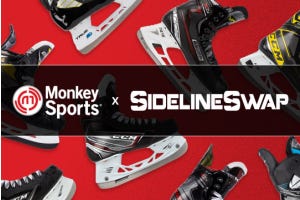
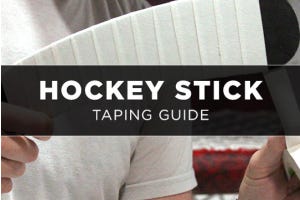

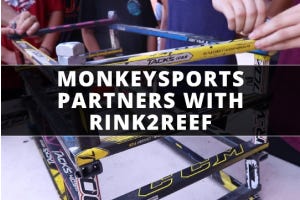
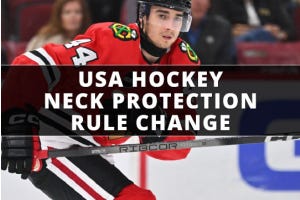



Login and Registration Form
or
Create an account